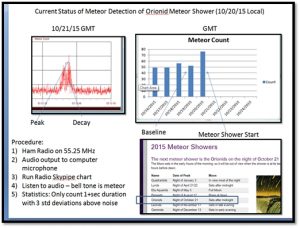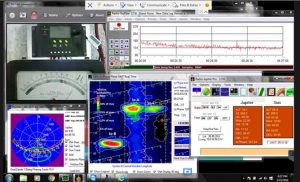Plishner Radio SuperSID Results – July 2016
- Here is my analysis of the SuperSID Data: DSES SuperSID Results July 2016
- There were a number of C1+ flares last month.
- There was an M1.9 flare on July 24.
- The system is barely detecting C flares and rarely detects B flares.
- I plan on taking to Plishner – this should increase sensitivity.
Plishner Radio Jove Results – July 2016
-
- Here is my analysis of the Radio Jove data for July 2016 from the Plishner site: DSES Plishner Radio Jove Results July 2016
- There was a significant improvement in detection results this month. This corresponds to the new antenna cabling.
Rich
Dr. Rich Russel
drrichrussel@netscape.net




